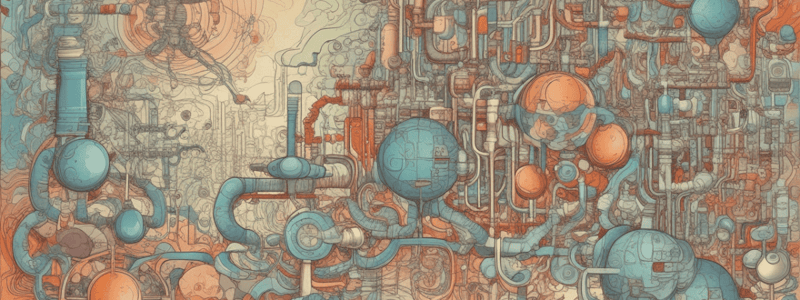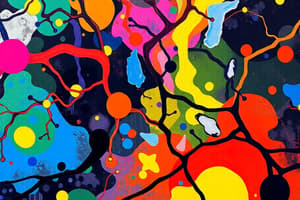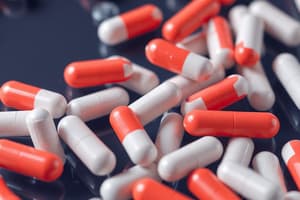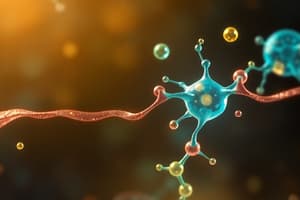Podcast
Questions and Answers
Which enzyme converts norepinephrine to normetanephrine?
Which enzyme converts norepinephrine to normetanephrine?
- Monoamine oxidase
- Catechol-O-methyltransferase (correct)
- Dopamine beta-hydroxylase
- Phenylethanolamine N-methyltransferase
What is the primary way catecholamines increase blood glucose levels?
What is the primary way catecholamines increase blood glucose levels?
- Stimulating lipolysis
- Stimulating gluconeogenesis (correct)
- Increasing insulin secretion
- Decreasing glucagon secretion
Which of the following is NOT a function of catecholamines?
Which of the following is NOT a function of catecholamines?
- Increase heat production
- Provide fatty acids through lipolysis
- Reduce hypersensitivity reactions
- Stimulate insulin secretion (correct)
How are the metabolic products VMA and Homovanillic Acid excreted?
How are the metabolic products VMA and Homovanillic Acid excreted?
What is the primary role of catecholamines in regulating heart activity?
What is the primary role of catecholamines in regulating heart activity?
Why do catecholamines have a short plasma half-life?
Why do catecholamines have a short plasma half-life?
Flashcards are hidden until you start studying
Study Notes
Functions of Catecholamines
- Catecholamines, especially norepinephrine and epinephrine, contribute to the metabolic response to trauma.
- They provide fatty acids as an energy source by stimulating lipolysis.
- They increase glucose production, a vital energy source for the brain, by: • Stimulating glycogenolysis and gluconeogenesis. • Inhibiting insulin secretion. • Stimulating glucagon secretion.
- They regulate blood pressure by causing vasoconstriction.
- They affect heart activity, increasing cardiac output.
- They reduce hypersensitivity reactions.
- They increase heat production.
Transport of Catecholamines
- Catecholamines are hydrophilic, so they are not bound to carrier proteins in plasma.
- As a result, they have a short plasma half-life of 10-30 seconds.
Metabolism of Catecholamines
- The liver metabolizes catecholamines through complex pathways.
- Norepinephrine and epinephrine are converted into normetanephrine and metanephrine, respectively, ultimately forming Vanillyl Mandelic Acid (VMA).
- Dopamine is converted into Homovanillic Acid.
- VMA and Homovanillic Acid are conjugated with glucuronate or sulfate in the liver.
- These conjugated metabolites are primarily excreted in the urine and, to a lesser extent, in the feces.
Studying That Suits You
Use AI to generate personalized quizzes and flashcards to suit your learning preferences.




